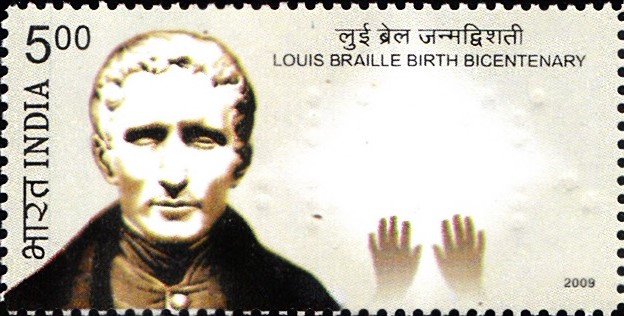
India on Louis Braille
A commemorative postage stamp on the Birth Bicentenary of Sir Louis Braille, an French Inventor of embossed script for visually challenged people :

 Issued by India
Issued by India
Issued on Jan 4, 2009
Issued for : India post is proud to issue commemorative postage stamp on Sir Louis Braille.
Credits :
Stamp : Shankha Samanta
FDC & Cancellation : Alka Sharma
Type : Stamp, Mint Condition
Colour : Multi colour
Denomination : 500 Paise
Stamps Printed : 3.0 Million
Printing Process : Photogravure
Printer : India Security Press, Nasik
Name : Louis Braille
Born on Jan 4, 1809 at Coupvray, France
Died on Jan 6, 1852 at Paris, France
About :
- There was a time, not long ago when most people thought that blind people could never learn to read. People thought that the only way to read was to look at words with your eyes.
- Blind persons, correctly addressed as ‘visually impaired‘ or ‘visually challenged‘ use an embossed script for reading and writing. Named after its inventor, Louis Braille, it is known as the Braille script.
- Louis Braille, a French man, was born in Coupvray, near Paris, on January 4, 1809. India and the entire world were, thus, celebrating the 200th Birth Anniversary of this great inventor.
- Louis‘s father, Simon Braille was harness and saddle-maker. One day when Louis Braille was a small boy, he crept into his father’s workshop to play. He had often seen his father making shoes and he decided he would like to try. He picked up an awl, a sharp, pointed tool used for making holes in leather. As he bent over, the awl slipped and pierced his eye, destroying it forever. Some time later his other eye became infected by the first and he lost his sight altogether. He was aged only 4, but still on to become one of the most famous Frenchmen ever to live.
- Despite his sight loss the young child attended the village school with his sighted friends for two years. Eventually it became clear that he would not be able to learn much more, largely because he could not read or write. Without an education it was likely that he would have to beg on the streets, like other blind people at that time.
- At the age of ten he was lucky enough to be sent to a school for blind boys in Paris, one of the first in the world. Conditions in the school were very harsh. The building was damp and unhealthy and discipline was severe. Pupils who misbehaved were beaten, locked up and given stale bread and water. In fact, this kind of discipline was common in all schools at that time. Life was harsh for nearly everyone and most sighted children left school at the age of 12 and went to work in factories or in mines.
- At the school in Paris the blind pupils were taught practical skills like chair caning and slipper making so that when they left the school they would be able to make a living. Once a week, after lunch, the boys were taken for a walk in the park, linked together by a long rope.
- They were also taught to read but not to write. The letters they read were raised above the surface of the page so that they could feel them with their fingertips. This form of writing was very difficult to read because it was very hard to tell the letters apart. The letters were printed by pressing copper wire into one side of the paper to make a raised shape on the other. Because each individual letter had to be made out of wire first and because the wire then had to be forced into the paper with a press blind people were unable to write anything for themselves.
- One day something happened that changed the lives of blind people forever. In 1821, a soldier named Charles Barbier visited Louis‘ school. He brought with him a system he had invented called “night writing“. Night writing had originally been designed so that soldiers could pass instructions along trenches at night without having to talk and give their positions away. It consisted of twelve raised dots which could be combined to represent different sounds. Unfortunately it proved to be too complex for soldiers to master and was therefore rejected by the army.
- The young Louis Braille quickly realised how useful this system of raised dots could be, provided it was simplified. Over the next few months he experimented with different systems until he found an ideal system using six dots. He continued to work on the scheme for several years after, developing separate codes for maths and music. In 1827 the first book in braille was published.
- Even so, the new system did not catch on immediately. Sighted people did not understand how useful braille could be and one head teacher at the school even banned the children from learning it. Fortunately this seemed to have the effect of encouraging the children even more and they took to learning it in secret. Eventually even sighted people began to realise the benefits of the new system.
- Not only could people with sight problems read braille but they could also write it for themselves using a simple stylus to make the dots. For the first time blind and partially sighted people began to be truly independent and to take control of their own lives.
- Louis Braille eventually became a teacher in the school where he had been a student. He was admired and respected by his pupils but, unfortunately, he did not live to see his system widely adopted. He had always been plagued by ill health and in 1852, at the age of.43, he died from tuberculosis.
- In France itself, Louis Braille‘s achievement was finally recognised by the state. In 1952, on the 100th anniversary of his death, the French Government honoured his memory by moving his remains to the Pantheon in Paris, the resting place of all great French heroes.
- Louis Braille‘s system has remained almost unchanged during the last about 150 years, despite the onset of various technologies, bearing testimony to his farsightedness and ingenuity. Louis Braille paved the way to knowledge and empowerment for millions of blind persons throughout the world.
- Braille, which is a script and not a language for the visually impaired, as is erroneously stated at times consists of six embossed dots placed in two vertical rows. It can be used for any language in the world and is written with the help of a pointed object known as ‘stylus‘. These days, technological devices and softwares are also available for writing Braille and producing books in that system.
- On his 200th Birth Anniversary, the visually impaired and all their sighted well-wishers salute this great international personality, who belongs not just to one country or continent, but the entire world and all languages.
- Text : As per the material provided by the proponent.


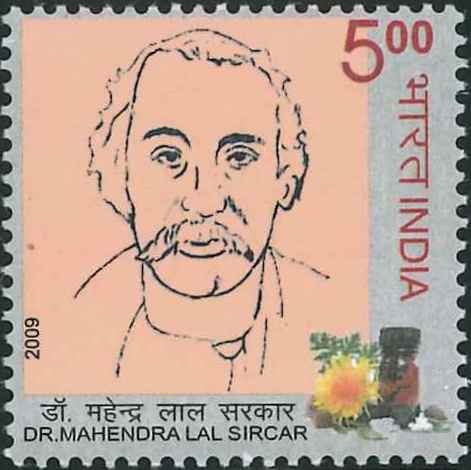
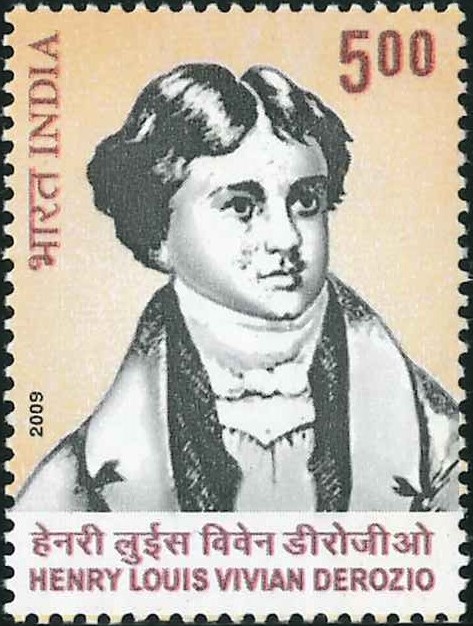
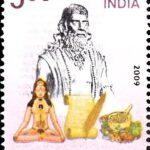

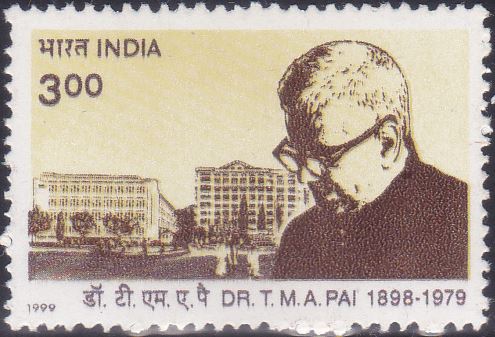
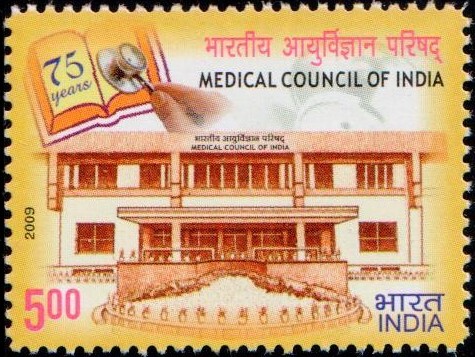
[…] hope comes from the Schools for Blind, which began first in Paris at the end of the 18th century. Louis Braille’s system of embossed reading and writing has lifted the burden of helplessness from the […]